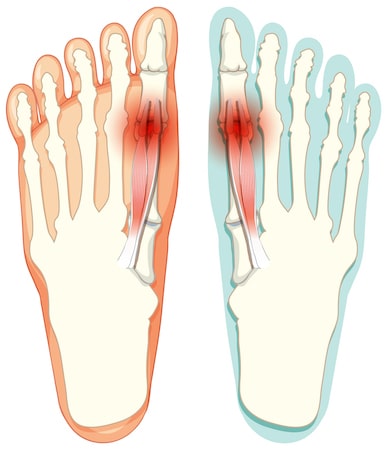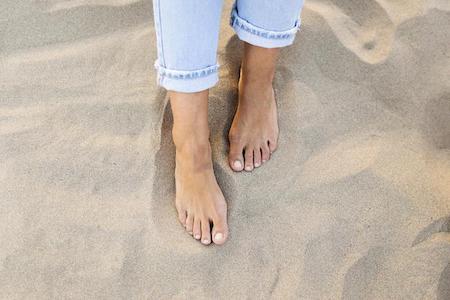DIABETIC FOOT
Diabetes mellitus
Diabetic mellitus commonly known as diabetes, is a group of diseases that affect how the body uses blood sugar (glucose). While new treatment approaches and medications have helped control blood sugar levels and reduce the risk of acute complications, long-term complications can still significantly impact quality of life.
Symtoms of Diabetic Foot

Let’s delve into the symptoms associated with diabetes:
Foot Ulcers: These may be the initial symptom in diabetic patients. Foot ulcers can arise due to several factors:
- Uncontrolled Blood Sugar: Elevated blood sugar levels contribute to poor wound healing.
- Dietary Control: A diet that isn’t well-managed can exacerbate foot problems.
- Vascular Issues: Diabetic vasculopathy, characterized by vascular occlusion and stenosis, affects blood flow to the feet.
- Nerve Damage: Diabetic neuropathy can lead to reduced sensation in the feet, making it harder to detect injuries or ulcers.
- Foot Hygiene: Neglecting proper foot care can increase the risk of ulcers.
Leg Pain: The primary cause of leg pain in diabetics is the narrowing and blockage of arteries, leading to reduced blood supply to the calf muscles during walking. Initially, there may be no symptoms, but as artery narrowing worsens, pain occurs while walking. Eventually, this pain becomes severe, forcing the person to stop and rest.
Rest Pain: Over time, the pain that initially subsided with rest may persist even when the person is not walking. Additionally, other symptoms may manifest, including:
- Coldness: The legs may feel unusually cold.
- Discoloration: Skin color changes due to compromised blood flow.
- Hair Loss: Reduced blood supply affects hair follicles.
- Non-Healing Wounds and Ulcers: Chronic wounds and ulcers may develop.
Diagnosis of Diabetic Foot
It’s essential for diabetics to prioritize foot care, monitor blood sugar levels, and seek medical attention promptly to prevent complications.
When a patient’s pulses cannot be detected during an examination, the first applicable diagnostic method is Doppler Ultrasonography.
This technique enables imaging of the blood vessels (angiography) for pre-treatment planning once the problem is identified.
It can be performed using computerized tomography (CT), magnetic resonance (MR), or catheter angiography methods. While catheter angiography provides the most accurate diagnosis, CT or MR angiography can also achieve high accuracy.
Treatment methods
For patients with diabetic foot and ulcerated or gangrenous wounds involve a combination of medical and interventional approaches:
Medical Treatment:
- Antibiotics: To manage infections.
- Blood Thinners: To prevent clot formation.
- Blood Sugar Regulation: To control diabetes.
- Emergency Debridement: If necessary, orthopedic surgeons perform wound cleaning.
Interventional Radiology:
- Vascular Stenosis and Occlusion Treatment:- Balloon or Stent: The main method involves removing stenosis or obstructions using a balloon or stent placed directly within the artery.
- Percutaneous Balloon and Stent Treatments: These minimally invasive procedures have advantages over surgical methods, including shorter hospital stays, smaller incisions, and reduced risks without the need for anesthesia.
- Thrombectomy and Atherectomy Systems: New technologies allow removal of thrombus (clots) and atheroma plaques causing vascular occlusion.
- Bypass Surgeries: In cases where stents or balloons cannot be used due to long-distance stenosis or occlusions, vascular surgery bypass procedures yield beneficial results.
Debridement for Gangrenous Wounds: Removing dead or infected tissue (debridement) is critical. It aids in preventing further tissue loss and allows healthy tissue to regenerate.
Hyperbaric Oxygen Therapy (HBOT): HBOT involves breathing pure oxygen in a pressurized chamber. It enhances wound healing by increasing oxygen supply to tissues.
Supportive Treatment Methods: These include pain management, addressing underlying vascular issues, and promoting overall well-being.
Multidisciplinary Approach
Collaboration among various medical specialties is crucial for preventing foot loss. Delayed treatment can lead to irreversible tissue damage. To avoid this, experts from different fields work together to provide comprehensive care.
Diabetic Outpatient Treatment
: To prevent recurrence or the development of diabetic foot issues:
- Medication Management: Regularly monitor blood sugar levels and use diabetes medications as prescribed.
- Diet and Lifestyle: Follow a balanced diet, avoid smoking and alcohol, and engage in physical activity (such as walking at least 8000 steps daily).
- Foot Hygiene: Keep feet dry, avoid excessive moisture, and maintain cleanliness.
- Foot Protection: Wear appropriate shoes and socks designed for diabetic patients to safeguard the feet.
- Remember, a proactive and holistic approach significantly improves outcomes and reduces complications
- Never walking barefoot at home, outside, or on the beach are the necessary precautions



